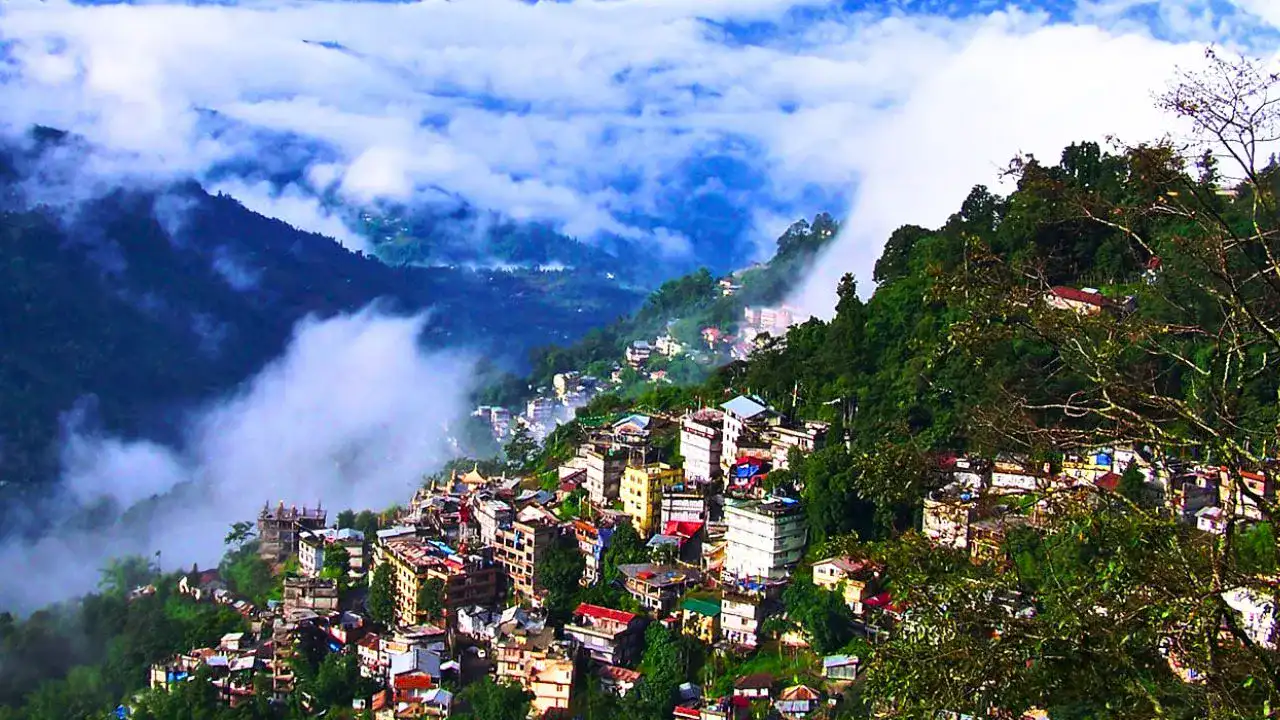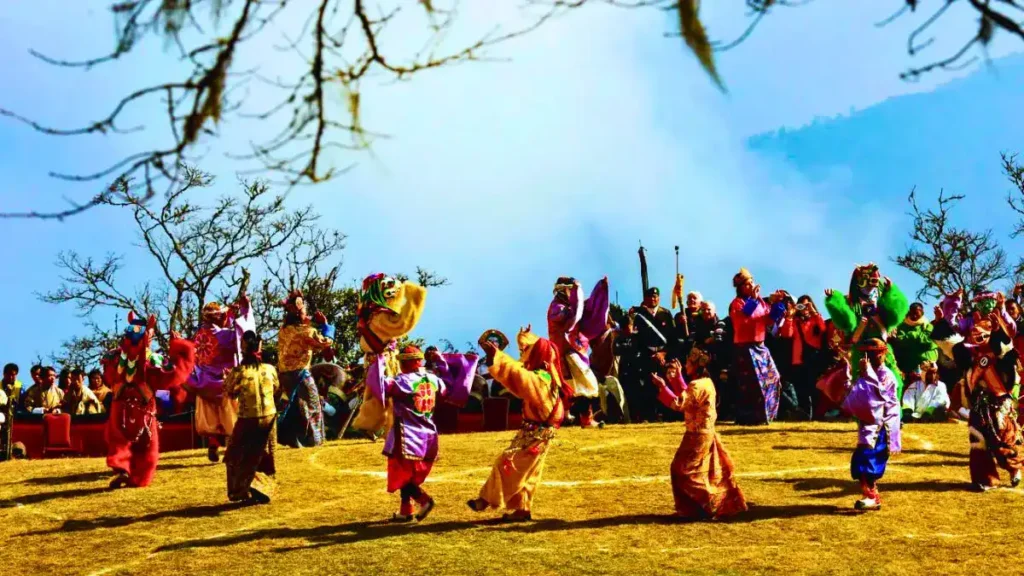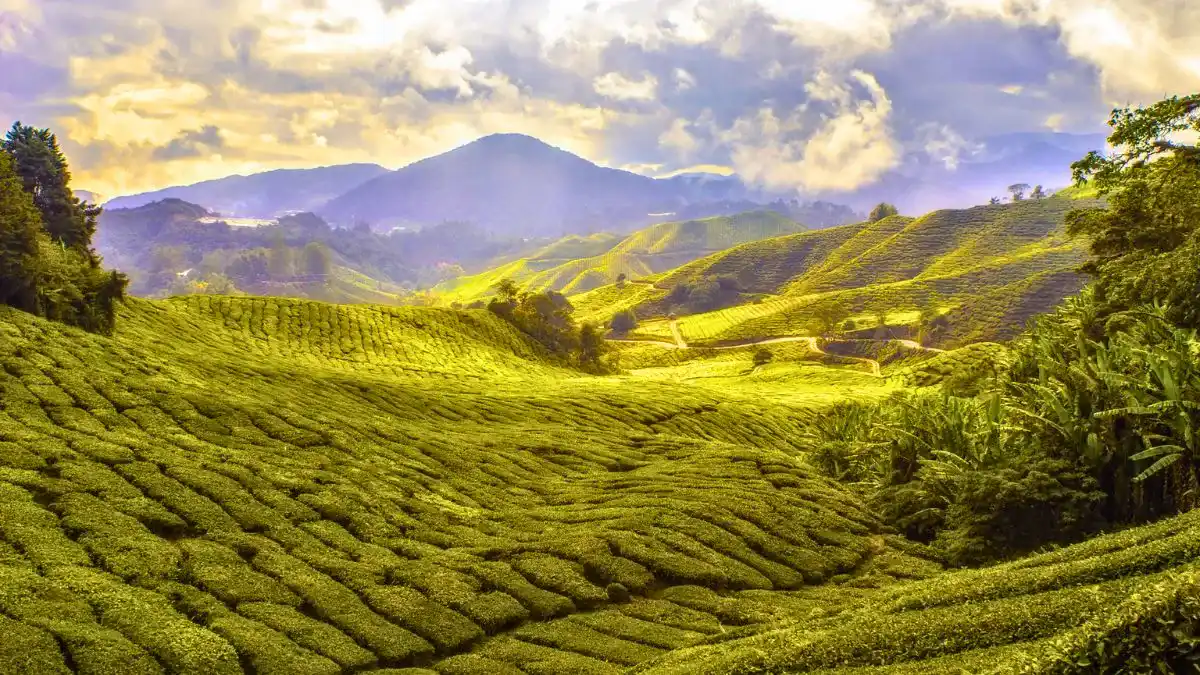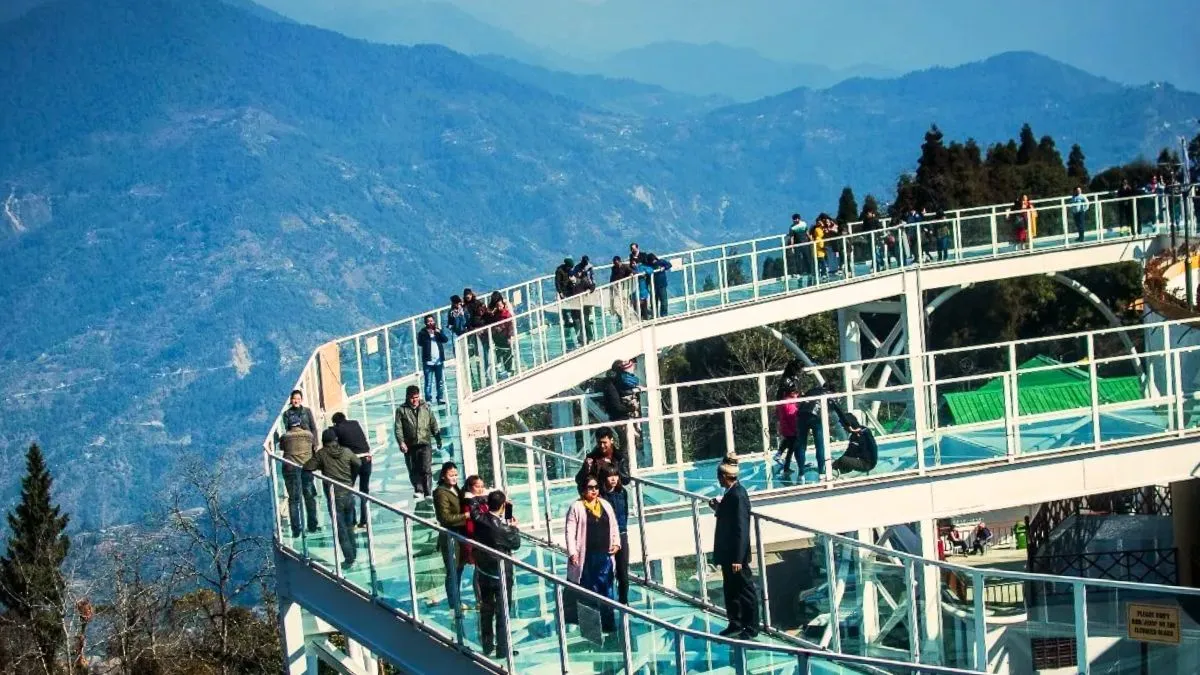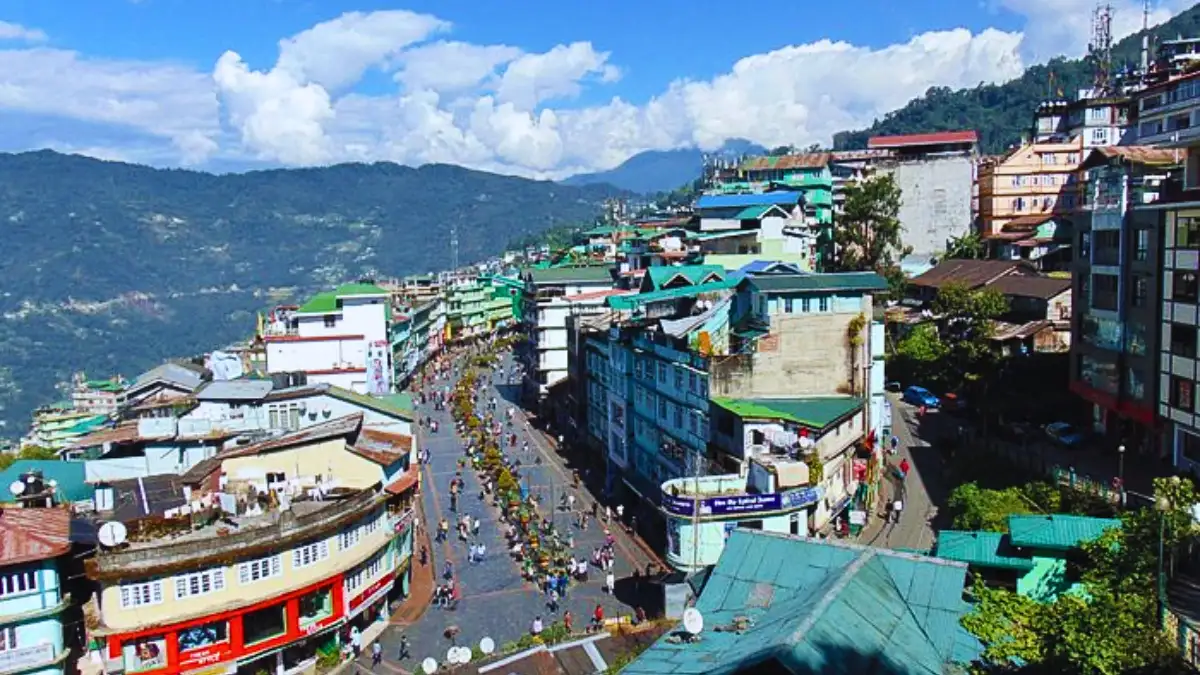Being one of the most scenic states in India, Sikkim is a fantastic place to visit. Here, a wealth of natural beauty and cultural variety exists with majestic snow-capped mountains, mysterious woods, meandering rivers, and remote hilltop monasteries.
The already breathtaking scenery of Sikkim is enhanced by the unique appeal of the monsoon season. The month of July coincides with the start of the rainy season, which turns Sikkim into an incredibly verdant paradise. This revitalizing time of year offers misty valleys, lush slopes, and roaring waterfalls.
Table of Contents
Weather in Sikkim in July
Every year, the monsoons give the Sikkim Himalayas a special appeal. When it’s at its best, in July, heavy clouds cover the tops of the mountains, and rain-washed slopes reflect the most vivid greens you’ve ever seen.
The Teesta bursts into its flaming magnificence. In little spots here and there, wildflowers blossom while the sky is colored shockingly pink, purple, and orange by sunsets. Most importantly, there is a noticeable drop in the number of visitors. The circumstances are perfect for an enthusiastic traveler who wants to see Sikkim’s magnificence in a whole new light.
The renowned guardian god of Sikkim, Guru Padmasambhava, also happens to be born in July. The celebration, called Tsungkar Tshechu, is widely observed in Sikkim with much fanfare and delight. One of the primary locations for the festivities is the Rumtek Monastery. On the monastery premises, there are special prayers and a captivating Chaam Dance depicting the eight incarnations of Padmasambhava.
Festivals and Events That Make May Special
Sikkim has an abundance of vibrant festivals all year long that allow you to immerse yourself in the native way of life, but 4 especially notable ones take place in July:
Tsungkar Tshechu
In Sikkim, people honor the birth of Guru Padmasambhava during Tsungkar Tshechu. This happens on the tenth day of the sixth Tibetan lunar month. The celebration involves plenty of prayers, scripture readings, and chaam dances. These show off Sikkim’s rich Buddhist history. People give flowers, light incense, and say prayers, hoping for blessings.
Drukpa Tshechi
The Drukpa Tshechi festival celebrates Tsangpa Gyare. He started the Drukpa Lineage. It happens on the 6th month’s 4th and 5th days at Rumtek Monastery. The festival is special because of the holy dances and spiritual topics. It’s open to tourists.
Buriakhang Bazaar Festival
Every July, Pelling becomes the stage for the Buriakhang Bazaar festival. It celebrates the unique customs and daily life of the Limboo people of Sikkim. Buriakhang hill inspired its name. Folk dances shake the ground, music fills the air, food stalls serve delicious tribal meals, and archery contests thrill onlookers. An immersive experience of taste, sight, and sound, it showcases a true slice of tribal life.
Also Read: Sikkim in June
Varsha Mangal Festival
Pelling in July is home to the Buriakhang Bazaar festival. It’s a showcase of the Limboo community of Sikkim and their ways of life. Buriakhang Hill is the namesake. The festival includes folk dances, musical shows, food booths, and archery contests. Visitors get an authentic taste of tribal food and a diversified cultural experience.
Places to Visit in Sikkim in July
Bermiok
Discover the natural wilderness and Buddhist spiritual heritage of West Sikkim by visiting the underappreciated Bermiok, which is close to the Tibetan border. Meditate among historically significant caverns such as Sanga Choling. It’s a satisfying climb up to the high Martam settlement via groves of rhododendron.
Discover traditional Lepcha hamlets making beautiful items along the route. Bermiok offers a tranquil vacation in the Himalayas among holy places and traditional charm.
Mangan
North Sikkim’s capital, Mangan, is a great place from which to see the area’s sights. Tours from here provide an opportunity to see the unspoiled beauty and rich cultural heritage of the regions around Dzongu and Lachen. Buddhist pilgrims often visit the holy caves in the vicinity of Mangan, such as Lha Ri Nying Phu. It’s also an excellent place to go on day treks to learn about the traditional Lepcha way of life while taking in the views of valleys and meadows.
Also Read: Best Time to Visit Gangtok
Yumthang Valley
Yumthang Valley, a must-see in North Sikkim, is transformed into a vibrant wonderland in the spring and summer when rhododendrons and other alpine flowers blossom. Its inherent charm is further enhanced by the hot springs close by.
Yumthang provides breathtaking views of snow-capped peaks, flowing waterfalls, and hazy meadows even during the rainy season. Spend your time exploring the surrounding area on foot, unwinding in the hot springs, and seeing the Shiva Mandir.
Yuksom
Situated among verdant woods and offering a breathtaking view of the Kanchenjunga mountain, Yuksom is endowed with both spiritual importance and breathtaking scenery. Three knowledgeable lamas founded it as the first capital of Sikkim in 1642 AD.
Trekkers depart Yuksom today for their high-altitude trips to Dzongri and Goecha La. Explore the magnificent Dubdi Monastery, which is regarded as the oldest in Sikkim, and see the Coronation Stone, which marks the dedication of the first Chogyal.
Pelling
Pelling, one of Sikkim’s favorite tourist spots, offers captivating vistas of snow-capped peaks and an abundance of breathtaking natural beauty. Perched at a height of 2150 meters, it provides a perfect starting point for discovering the wonders of western Sikkim. Savor the breathtaking dawns that illuminate the Kanchenjunga mountains from this location.
Take some time to meditate in the peaceful Pemayangtse Monastery, which dates back to the seventeenth century. Take in the relaxed atmosphere as you visit Sanga Choling Monastery, Khecheopalri Lake, and the charming villages around Pelling.
Gangtok
Without seeing Gangtok, the state capital, no visit to Sikkim is complete. Stroll along the busy M.G. Marg, which is dotted with eateries, shops, and bars. See sacred places like the supposedly wish-fulfilling Do-drug Chorten Stupa and Enchey Monastery. The stunning Hanuman Tok, a temple complex with breathtaking views of Gangtok and the Kanchenjunga range, is another not to be missed. Popular are paragliding trips over the hills and valleys of the town.
Also Read: Things to do in Sikkim
Things To Do in Sikkim in July
July is the perfect month to explore Sikkim’s varied adventures and immersive experiences because of the lower temperatures and gorgeous scenery:
- Ride a Mountain Bike on Beautiful Paths
- Try Birdwatching
- Take Short Treks
- Explore Village Life
Conclusion
So, Sikkim in July? It’s a hidden gem for voyagers. When the rain pours, the whole state turns into a fresh, green haven. It’s natural allure and cultural depth bloom. There are not many tourists, so it’s a good time to discover places such as Yumthang Valley and Pelling. Join in colorful celebrations like Tsungkar Tshechu. Try trekking and birdwatching. Seeking thrill or peace, Sikkim in July delivers a journey to remember. Through its green scenery and deep-rooted customs, it’s a big yes!
Buy the Sikkim Tour Package Here: Sikkim Tour Package
Frequently Asked Questions
Is July an ideal month to go to Sikkim?

Yes, visiting Sikkim in July is a wonderful way to see the misty mountains, verdant woods, and blossoming rhododendrons. It’s great for nature lovers since there are few visitors there. However, schedule buffer days and be ready for landslides.
Is Chadar Trek possible in July?

No, the Chadar journey is only feasible when the Zanskar river freezes over in the dead of winter. Because of the potential of landslides during the monsoon, hikes at high altitudes should be avoided.
Is it safe for women to travel alone in Sikkim during the monsoon season?

Sikkim is secure for female travelers, but it’s always a good idea to exercise care, particularly while hiking or traveling far from civilization. Don’t hike alone and stay away from really isolated places.
How is the temperature in Sikkim in July?

In July, it will be between 15°C and 17°C, and it will rain and be warm. The weather is usually cool and nice during the day, but heavy rain can happen sometimes. Bring protective raincoats.
How can I travel within Sikkim during monsoons?

Taxis and shared jeeps may be readily accessed from most tourist locations. Plan buffer days since inclement weather might lead to delays and obstacles. For more convenience, rent a private car.


